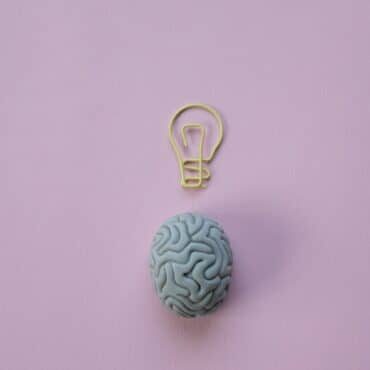

Understanding the Teenage Brain
By Christine Coyle | May 3, 2023
*This blog is not meant to be a replacement for therapy with a trained professional.*
“The adolescent brain was long portrayed as broken, immature, or contributing to problematic behaviors. But in the last five years, there’s been a huge shift toward seeing the developing brain as malleable, flexible, and promoting many positive aspects of development in adolescence.” Eva Telzer, PhD, University of North Carolina, Chapel Hill
For decades now, teens and adolescents have been characterized by their risky behaviors, poor decision making, and immaturity. Neurologically; however, that is not completely true.
The narrative around brain development is beginning to change as more research is being conducted. There has been a growing recognition that teens’ immaturity is actually a sign of neurological flexibility that translates in cognitive and behavioral ways. Using updated methodologies and more experimental tasks that have real-world relevance, researchers have been able to dive deeper into the teenage brain to answer questions about adolescents within the context of our society.
Development is a process, not a single event.
Adolescence is a time of navigating a new social world, new skills, and new opportunities. It is a period of learning how to manage emotions, gain independence, and develop a sense of responsibility for actions. Developmentally, teens are wired for sensation seeking and risk taking. With this advanced research, we are seeing the upside to this in that it allows teens to foster meaningful relationships and create personal connections with others. Common behaviors that teens seem drawn towards include increased peer-directed social interaction, increased fighting with parents, novelty seeking, sensation seeking, risk taking, and greater per-occasion substance use.
During adolescence, the brain grows rapidly and new neurological connections are being made constantly. In early childhood, there is an overproduction of grey matter in the brain which contains a great number of synapses. When puberty hits, the brain begins to improve its communication between different regions through these synapses. When neurons become more myelinated, it allows signals to travel faster and more efficiently throughout the brain. This process is called pruning, which results in the significant loss of grey matter and the increase of white matter in order to create and maintain higher functional connections with other brain regions. Pruning allows for the adolescent brain to reconfigure and rewire itself and begin forming adult patterns.
Teens have been known to have heightened emotional sensitivity and for good reason. The emotional centers of the brain, located in the limbic system and the amygdala, are responsible for these intensified emotions, and these areas develop earlier and more rapidly than the decision-making centers in the prefrontal cortex. As a result, teens process the majority of information within the limbic system, leading to a higher likelihood of them responding in emotion mind rather than reasonable mind.
The prefrontal cortex controls all executive functions. It allows us to plan for the future, organize ourselves, understand our emotions, make decisions, reason, and problem solve. Unfortunately, the prefrontal cortex does not fully mature until an individual is about 25 years old. And, until then, the brain operates mainly using its emotional centers, which targets sensation and reward-seeking behaviors. This delayed maturation also allows for immaturities in cognitive control, attentional regulation, response inhibition, and other cognitive functions that are regulated by the prefrontal cortex. When adolescents face stressful or emotionally arousing situations, the amygdala often takes over and weakens prefrontal cortex activity making it more difficult to respond with logic.
The dual systems model suggests a developmental imbalance between the socio-emotional system and the cognitive self-regulation systems within adolescents. As the two systems develop at different rates, the result is a peak in sensation-seeking behaviors. This can cause a generalized increase in risk-taking decisions during a period of adolescent exploration.
The limbic system is closely tied to our internal reward system. Whenever we complete tasks that create a pleasurable sensation, our brains release dopamine, or the “feel good” chemical. During adolescence, dopamine activation increases and is involved in the recognition and anticipation of reward or pleasure. It is also activated within the pathways responsible for focus and attention, so it makes sense why teens seem to be driven by pleasurable experiences. In fact, dopamine has such a big influence on teens’ behaviors that it is what drives learning and new experiences.
When faced with an emotionally arousing situation, it is common for teens to disregard their rational decision making in exchange for making more impulsive decisions with higher likelihood of reward. A novel stimuli or an exciting or risky situation taps into the complex reward system in the brain that is necessary for survival-essential rewards. Dopamine is released in response to performing these emotionally-driven behaviors in order to gain rewards, which can be associated with greater risk-taking. Therefore, when faced with aversive stimuli that produce negative consequences, the teenage brain tends to be less avoidant of the potentially harmful consequences of their actions. This is in part because the prefrontal cortex that monitors penalties and conflicts is less sensitive, while the amygdala becomes more activated.
Social interactions are key in the development of the teenage brain. As teens’ surroundings and interpersonal relationships shift from parents to peers, socialization becomes a fundamental part of their development and learning. The amygdala has primary control over social behaviors as it processes social stimuli to produce positive and negative outcomes, which are closely tied to emotions.
In Pfeifer’s research (2018), they found changes in the adolescent brain make teens more sensitive to social information in regards to peer acceptance. Areas within the prefrontal cortex related to the evaluation of self and status were activated, suggesting that identity is highly valued by teens. It is important for teens to feel like they are a part of a group, so they will often adjust or adapt their own behaviors to fit the group’s norms. Whatever the group views as positive will be accepted and repeated, while whatever is viewed as negative will likely be repressed.
While it may seem like your teen wants nothing to do with you, parents actually play a pretty important role in the healthy development of the adolescent brain. In a longitudinal study conducted by Telzer (2021), it was shown that teens tend to align their behaviors with their parents rather than peers when faced with a risky decision. In addition, the synchrony between teens and their parents has been further studied in Silk’s (2021) brain scanning research. It was found that adolescent brain activity tends to mirror their parent’s brain activity within the amygdala and other emotion-processing regions.
“I think a lot of parents believe that it’s too late, that by adolescence, peers have all the power,” Silk said. “But this research is showing that parents shouldn’t give up, that they still do have the power to help their adolescents learn how to process and regulate their emotions.”
The role of adults and parents is a big job. It is in a parents’ nature to protect their child from harmful things in the world, but this is easier said than done. The adolescent perspective is much different than adults; therefore, it is fundamental to listen, understand, and value your teen’s point of view. As teens engage in new situations and experiment with risky behaviors, it is a parent’s job to allow them the space to explore while simultaneously providing information about the potential consequences of their behavior. The most important thing is that a child learns from their mistakes. Creating and maintaining a nurturing space for teens to express their concerns and feelings is important in the parenting process. Utilizing CBT-based strategies may also help teens bypass their emotional processing centers and more effectively exercise their prefrontal cortex functions.
As a recent college graduate, I can easily think back to my experiences as a teenager. I am able to pinpoint certain experiences where I may have not had the best judgment, but I still remember how much I learned from my mistakes. Kids will take risks, they will make mistakes, and this is all part of the complicated stage of young adulthood. It is a challenging time for both teens and their parents, so give yourself some slack.
So I ask you, think back to your teenage self…
What mistakes did you make? How did you learn from them?
What advice would you give yourself based on what you know now?
This blog was prepared by Caroline McNeil.
Sources:
https://www.apa.org/monitor/2022/07/feature-neuroscience-teen-brain
https://letstalkscience.ca/educational-resources/stem-in-context/understanding-teen-brain
https://parentandteen.com/adolescent-brain-development/
https://neurosciencenews.com/teenage-brains-risk-21757/
https://www.jahonline.org/article/S1054-139X(12)00207-8/fulltext
https://link.springer.com/article/10.1007/s10964-021-01433-z


